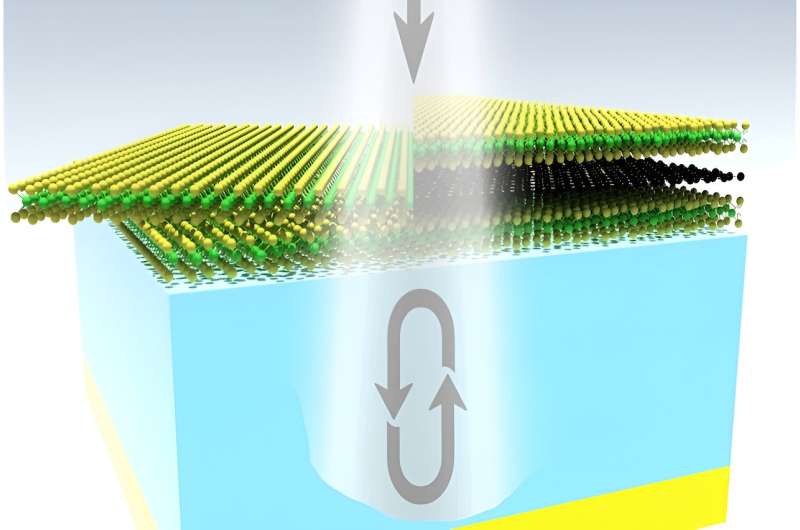This article has been reviewed according to Science X's editorial process and policies. Editors have highlighted the following attributes while ensuring the content's credibility:
fact-checked
peer-reviewed publication
trusted source
proofread
Research team achieves near-perfect light absorption in atomic-scale material

A University of Minnesota-led team has, for the first time, engineered an atomically thin material that can absorb nearly 100% of light at room temperature, a discovery that could improve a wide range of applications from optical communications to stealth technology. Their paper has been published in Nature Communications.
Materials that absorb nearly all of the incident light—meaning not a lot of light passes through or reflects off of them—are valuable for applications that involve detecting or controlling light.
"Optical communications are used in basically everything we do," said Steven Koester, a professor in the College of Science and Engineering and a senior author of the paper. "The internet, for example, has optical detectors connecting fiber optic links. This research has the potential to allow these optical communications to be done at higher speeds and with greater efficiency."
The researchers made this "near-perfect absorber" possible by using a technique called band nesting to manipulate the already unique electrical properties in a material made up of only two to three layers of atoms. Their fabrication method is simple, low-cost and requires no nanopatterning methods, which means it's easier to scale up than that of other light-absorbing materials being studied.
"The fact that we are able to achieve this near-perfect light absorption at room temperature with only two or three atomic layers of material is really the key innovation here," said Tony Low, an associate professor in the College of Science and Engineering. "And we were able to do that without using any complex and expensive patterning techniques, which could allow us to make perfect absorbers in a more feasible and cost-effective way."
More information: Seungjun Lee et al, Achieving near-perfect light absorption in atomically thin transition metal dichalcogenides through band nesting, Nature Communications (2023). DOI: 10.1038/s41467-023-39450-0
Journal information: Nature Communications
Provided by University of Minnesota




















